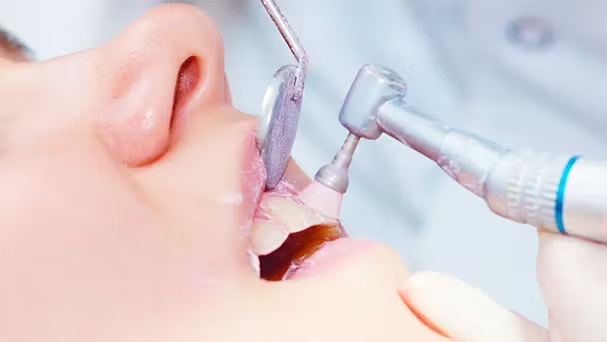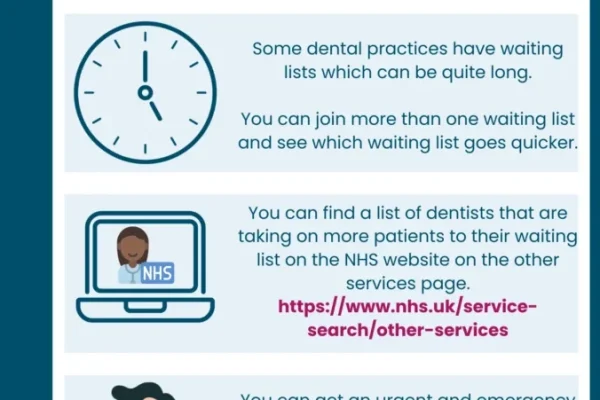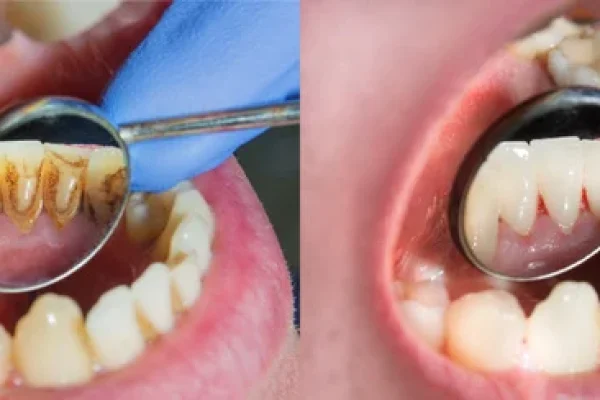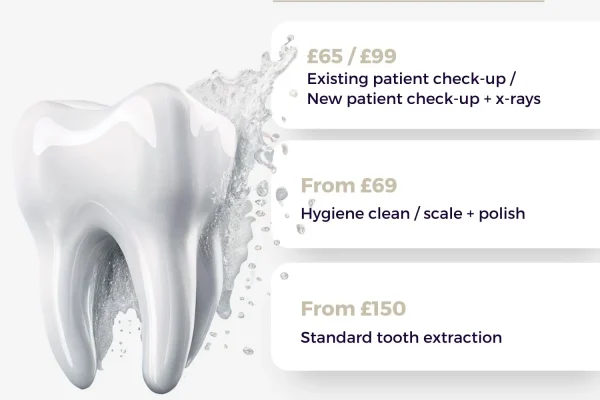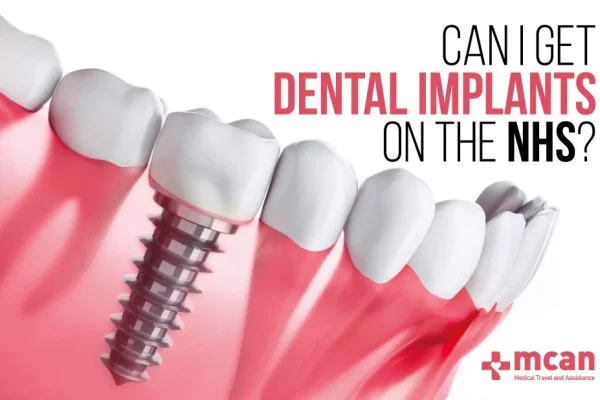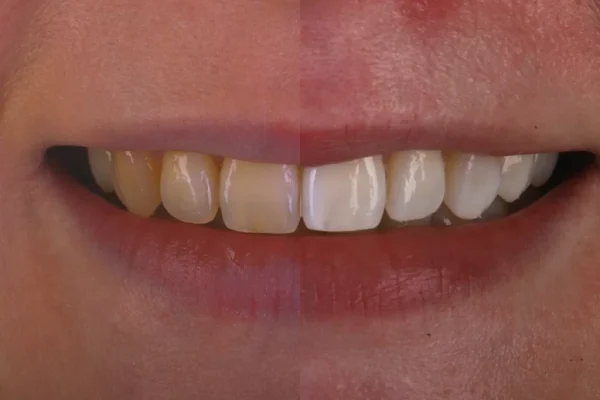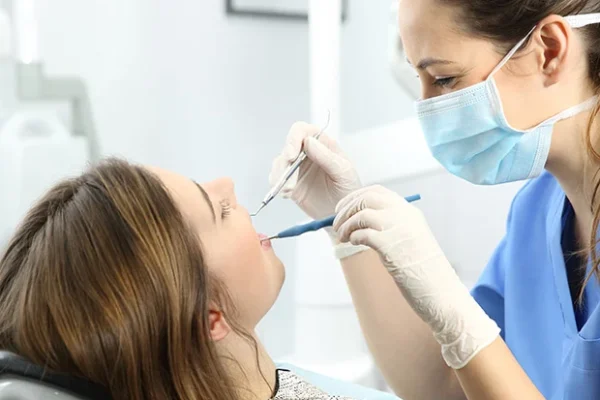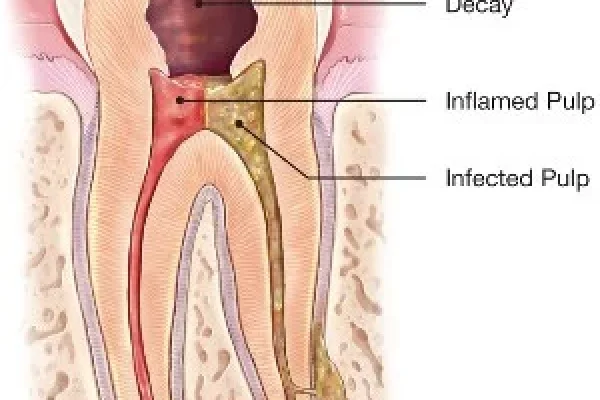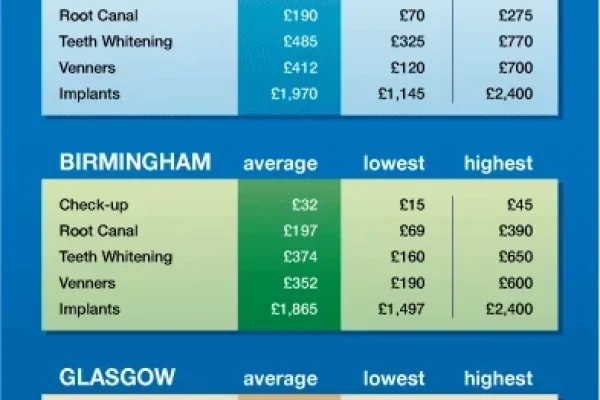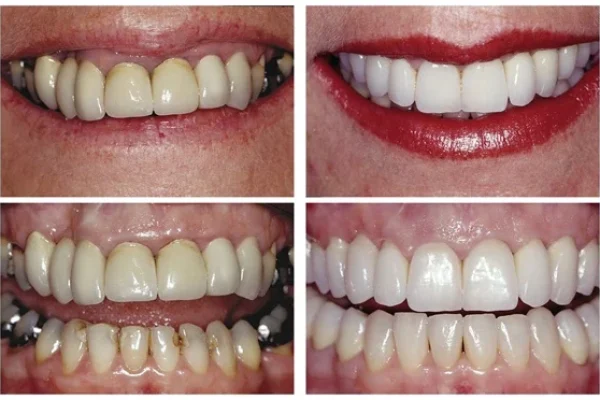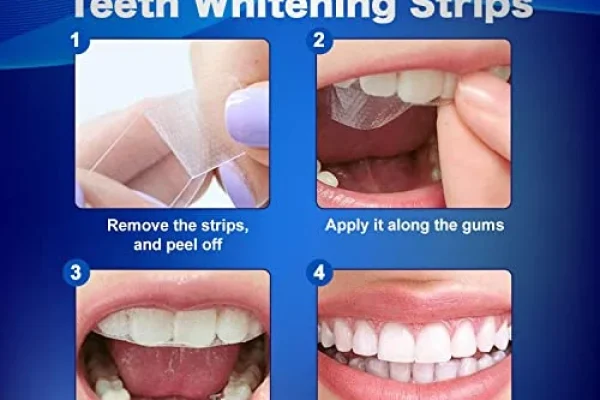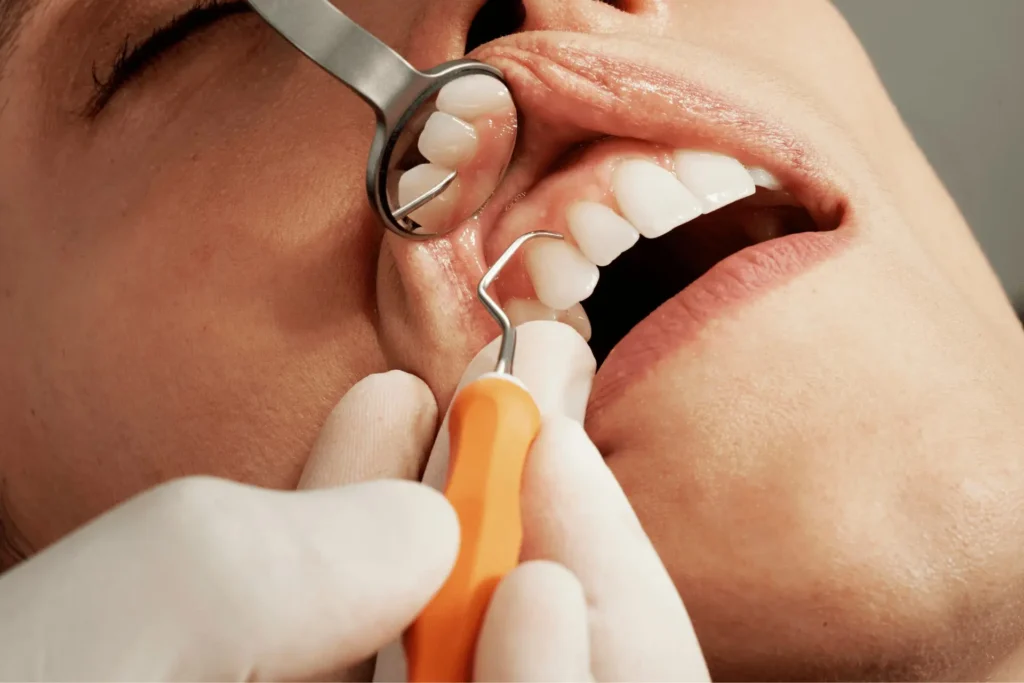
Table of Contents
ToggleKey Takeaways
-
- A Scale and Polish is a *professional dental cleaning* to remove plaque and hardened tartar (calculus) missed by daily brushing/flossing.
-
- It involves two main steps: **Scaling** (removing deposits) and **Polishing** (smoothing surfaces and removing stains).
-
- The procedure is typically *not painful* for most, but can involve *discomfort, pressure, or temporary sensitivity*, especially if gums are inflamed or there’s significant build-up.
-
- **Benefits** include preventing/managing gum disease and cavities, removing surface stains, fresher breath, and early detection of problems.
-
- It is *essential* for maintaining long-term oral health and cannot be performed effectively or safely at home.
- Routine frequency varies (typically 6-12 months) based on individual needs and risk factors, as advised by your dental professional.
What is a Scale Polish and Why Is It Important for Oral Health?
Let’s cut to the chase: What exactly *is* a scale and polish? At its heart, it’s the professional dental cleaning procedure your smile desperately needs beyond your daily brush-and-floss routine. Think of it as a spa day for your teeth and gums, meticulously performed by a trained dental hygienist or dentist. It’s a two-punch combo designed to rid your mouth of the unwelcome guests that daily life inevitably leaves behind. The first punch is scaling, the heavy lifting part. This is where the dental pro meticulously removes plaque – that sticky film of bacteria constantly forming on your teeth – and its hardened, mineralized form, tartar (also known as calculus). You see, while diligent brushing and flossing are champions at removing plaque daily, they simply cannot budge hardened tartar once it’s latched onto your tooth surface. Tartar is like dental concrete, rough and porous, providing a perfect hideout for more plaque and bacteria, often just below the gum line where your brush can’t reach.
Why is banishing these villains so crucial? Because plaque and tartar are the primary culprits behind gum disease (gingivitis and periodontitis) and cavities. They irritate your gums, leading to inflammation, bleeding, and eventually, if left unchecked, bone loss and tooth mobility – the stuff of dental nightmares. So, scaling isn’t just about cosmetic cleanliness; it’s about dismantling the bacterial strongholds threatening the very foundations of your teeth.
The second punch is polishing. After the scaling clears away the rough stuff, polishing uses a special paste and tool to smooth the tooth surfaces. This isn’t just for sparkle (though it certainly helps!). A smooth surface is far less inviting for new plaque to cling onto, making your home brushing and flossing more effective in the days and weeks following your appointment. It also buffs away superficial surface stains from coffee, tea, red wine, and tobacco, leaving your teeth looking brighter and feeling incredibly clean. This procedure is a routine, yet vital, element for maintaining what dental professionals refer to as ‘periodontal health’ – the health of the tissues supporting your teeth. It’s a cornerstone of preventive dentistry, catching small issues before they escalate into major problems and keeping your breath fresher by eliminating odour-causing bacteria traps. You’ll often hear terms like “teeth scale and polish” or “teeth scaling and polishing” – they all refer to this essential professional clean. It’s a non-negotiable step in a comprehensive oral hygiene plan, typically performed by a dental hygienist, who is a specialist in preventive oral care, though dentists are also trained to carry it out.
What Exactly is a Scale and Polish?
Drilling down further, a scale and polish is precisely what it sounds like: a professional process involving the scaling away of deposits and then polishing the tooth surfaces. It’s fundamentally different from your daily brushing and flossing routine. While home care removes *soft* plaque and food debris, it lacks the tools and techniques to effectively tackle *hardened* tartar (calculus) that adheres firmly to tooth surfaces. A scale and polish addresses this calcified build-up, which acts as a rough surface encouraging more plaque accumulation and gum irritation. Unlike the superficial clean you achieve with a toothbrush, this procedure targets the areas where bacteria thrive most dangerously – along the gum line and in between teeth, often extending slightly into the gum pocket in healthy mouths. It’s a deeper, more thorough intervention, essential because leaving tartar creates a vicious cycle: tartar attracts more plaque, which inflames gums, which can lead to the gum pulling away from the tooth, creating deeper pockets where more tartar can form, further worsening gum disease. The professional scale and polish breaks this cycle.
What Does a Scale and Polish Do?
The primary functions of a scale and polish are threefold, all working synergistically to improve your oral health. Firstly, and most importantly, it performs the heavy-duty removal of hardened calculus (tartar) and substantial plaque build-up that your toothbrush and floss cannot handle. This clears the way for your gums to become healthier. Secondly, the polishing step removes unsightly surface stains caused by lifestyle factors like diet (coffee, tea, red wine) and smoking. This doesn’t chemically whiten your teeth, but by removing extrinsic stains, it reveals their natural brightness. Finally, and crucially, the polishing creates a wonderfully smooth tooth surface. Why does this matter? Because bacteria and plaque find it much harder to adhere to a smooth surface compared to a rough one left behind by calculus or even unpolished enamel. This smoothness makes your daily home cleaning efforts significantly more effective, helping you maintain that ‘fresh from the dentist’ feeling for longer and slowing down the rate at which new deposits form. Ultimately, a scale and polish is a powerful preventive tool, drastically reducing your risk of developing gum disease and tooth decay.
What Does Scaling and Polishing Include?
The process of a scale and polish involves specific tools and materials wielded with professional skill. For the scaling phase, dental professionals utilise a combination of instruments. Manual scalers are hand-held metal instruments with shaped tips designed to carefully scrape away calculus from the tooth surface, both above and slightly below the gum line. Often, these are used in conjunction with ultrasonic scalers. These electric instruments have a vibrating tip that emits ultrasonic waves, coupled with a jet of water. The vibrations efficiently break up large pieces of calculus, while the water spray cools the tip and flushes away debris. It’s a highly effective way to remove significant build-up relatively quickly. Once the scaling is complete, the focus shifts to polishing. This is typically done with a slow-speed dental handpiece fitted with a soft rubber cup or occasionally a small brush. An abrasive paste, known as prophy paste, is applied to the teeth. This paste comes in varying grit levels – from coarse to fine – which the hygienist selects based on the amount of staining and the patient’s tooth sensitivity. The rotating rubber cup or brush works the paste over the tooth surfaces, buffing away surface stains and smoothing the enamel. The entire procedure covers all accessible tooth surfaces, ensuring a comprehensive clean both above and slightly below the gum line where plaque and calculus commonly accumulate.
How Does Scale and Polish Work?
Understanding the mechanics helps demystify the process. The scaling stage relies on breaking the bond between calculus and the tooth surface. Ultrasonic scalers work through high-frequency vibrations (many thousands per second) transmitted through the tip. When the tip touches the calculus, these vibrations essentially shatter or chip away the hard deposits. The accompanying water spray helps dislodge the loosened calculus and washes away the debris. Manual scalers, on the other hand, work by carefully positioning the sharp tip against the calculus and using controlled strokes to scrape it away from the enamel surface. It requires precision and skill to remove the calculus without damaging the tooth or gum tissue. The polishing stage is a mechanical process of abrasion. The prophy paste contains fine abrasive particles suspended in a base. As the rubber cup or brush spins, it spreads the paste across the tooth surface. The friction between the abrasive particles, the rubber cup/brush, and the enamel gently buffs away superficial stains and smooths out any microscopic irregularities or rough spots left after scaling. This creates a slick, highly polished surface that not only feels great but also makes it much harder for new plaque to adhere, giving you a head start on your home care routine. It’s a combination of powerful removal and protective finishing.
Is Scale and Polish the Same As Visiting a Dental Hygienist?
This is a common point of confusion, but the answer is straightforward: a scale and polish is a core component of a dental hygiene appointment, but it’s not the *only* thing that happens. When you visit a dental hygienist, the scale and polish is the main event, the primary cleaning procedure they perform. However, a comprehensive hygiene appointment usually includes more than just the cleaning itself. It typically begins with an examination of your gums and overall oral health, checking for signs of gum disease or other issues. The hygienist will then perform the scale and polish to remove deposits and stains. Crucially, a significant part of their role involves oral hygiene education. They will assess your current brushing and flossing technique, offer personalised advice on how to improve your home care, recommend specific products (like interdental brushes or specialised toothpastes), and explain the importance of regular cleaning and check-ups. So, while ‘scale and polish’ refers specifically to the cleaning part (removing calculus and polishing), a visit to the dental hygienist encompasses this *plus* assessment, education, and tailored guidance for maintaining optimal oral health between visits. In essence, the scale and polish is the service, the hygienist is the provider, and the appointment is the full package focused on preventive care.
Exploring the Scale and Polish Procedure: Step-by-Step
So, you’ve booked your appointment. What actually happens when you recline in that chair? The scale and polish procedure is a systematic process, designed to be thorough and effective. It doesn’t just happen randomly; there’s a flow to it that ensures every surface gets attention. First, the hygienist or dentist will typically do a brief preliminary check, assessing the general state of your gums and teeth, looking for areas with significant build-up or inflammation. This helps them determine the best approach and tools to use. Then comes the main event: the scaling. Using a combination of ultrasonic and manual instruments, they’ll meticulously work their way around your mouth, tooth by tooth, surface by surface. You’ll hear the hum of the ultrasonic scaler and feel vibrations, perhaps some light scraping or pressure from the manual tools. They pay close attention to the gum line and the spaces between your teeth, where plaque and tartar love to hide. Water is frequently used to rinse away debris and keep the area clean. Once all the hardened deposits have been carefully removed, the cleaning phase is essentially complete. But the procedure isn’t over. Next is the polishing stage. Using a slow-speed handpiece and a rubber cup or brush with a special abrasive paste, they’ll polish all the tooth surfaces. This removes any remaining superficial stains and, crucially, smooths out the enamel, making it much harder for future plaque to stick. After polishing, they’ll usually give your mouth a final rinse. The appointment might conclude with the hygienist applying a fluoride treatment, which helps strengthen the enamel and reduce sensitivity. They will also often take this time to provide personalised oral hygiene instructions, demonstrating proper brushing and flossing techniques and answering any questions you might have about maintaining your results at home. It’s a comprehensive clean-up and education session wrapped into one visit.
What To Expect During a Scale & Polish?
Stepping into the unknown can be a little daunting, but knowing what sensations and sounds to anticipate during a scale and polish can ease any nerves. When the hygienist begins the scaling phase, especially with an ultrasonic scaler, you will hear a distinct humming or whirring sound. The tip of the instrument also vibrates rapidly, and you will feel these vibrations against your teeth. There’s often a constant spray of water from the ultrasonic scaler, which helps to cool the tip and flush away the debris being removed. Don’t be surprised if you need to swallow or if the hygienist uses suction to keep the water and saliva clear. You might also feel scraping or pressure from the manual instruments as the hygienist carefully works to remove stubborn calculus. This shouldn’t be *painful* for most people, but it can be uncomfortable or feel slightly intense, particularly in areas with significant build-up or where the gums are inflamed. As the procedure progresses, your mouth will be rinsed frequently. During the polishing phase, you’ll feel the gentle pressure of a spinning rubber cup against your teeth. The polishing paste can feel gritty, and you’ll hear the sound of the slow-speed handpiece. The entire process might take anywhere from 30 to 60 minutes, depending on the amount of plaque and tartar present and the overall health of your gums. Throughout the appointment, the hygienist will likely chat with you, checking on your comfort level and explaining what they are doing.
What do Dentists Use to Polish Teeth?
The finishing touch in a scale and polish is the polishing, and for this, dental professionals use specific materials and tools designed to smooth the tooth surface effectively and safely. The main abrasive agent is a prophylaxis paste, commonly referred to simply as prophy paste. This isn’t just any abrasive; it’s specifically formulated for use on tooth enamel. Prophy pastes come in various grit levels, from coarse (for removing heavier stains) to fine (for a high shine or for use on more sensitive teeth). The hygienist selects the appropriate grit based on your individual needs. The paste is applied to the teeth using a slow-speed dental handpiece. This is a different, much slower-rotating drill-like tool compared to the high-speed drills used for fillings. Attached to the handpiece is either a small rubber cup or a tiny brush. The rubber cup is the most common tool; its flexible nature allows it to conform to the contours of the tooth surface, ensuring effective polishing. As the handpiece spins, the cup or brush rotates, working the abrasive paste over the enamel. This mechanical action gently removes surface stains and smooths the microscopic surface of the tooth, creating that wonderfully clean and slick feeling you experience post-polish. The key is using the correct paste and a slow, controlled speed to polish the surface without generating excessive heat or wearing away enamel unnecessarily.
Is Polishing Compulsory After Scaling?
While scaling is almost always the essential, non-negotiable step of a professional clean because it removes the hardened, disease-causing calculus, polishing is not always strictly compulsory, depending on the clinical situation and the practitioner’s philosophy. The primary purpose of polishing is twofold: to remove extrinsic (surface) stains for aesthetic improvement and to create a smoother tooth surface that is less hospitable to plaque accumulation. For many patients, especially those with visible staining or those who simply love the smooth, clean feel it provides, polishing is a standard and desired part of the procedure. It significantly enhances the feeling of cleanliness and can make your teeth look noticeably brighter by removing discolouration from coffee, tea, and other sources. However, in certain clinical scenarios, polishing might be modified or even skipped. For instance, if a patient has significant tooth sensitivity, exposed root surfaces due to gum recession, or if the cleaning was extensive (like a deep clean), the hygienist might use a very fine-grit paste, limit the polishing time, or focus only on specific areas to avoid exacerbating sensitivity or unnecessarily wearing down exposed root surfaces (which are softer than enamel). Some practitioners might argue that if the primary goal is purely therapeutic removal of calculus, polishing, being largely cosmetic and offering a marginal advantage in plaque resistance compared to meticulous home care, is less critical in certain cases. However, for a standard routine ‘scale and polish’, polishing is almost always included and expected by both the patient and the practitioner due to its aesthetic benefits and contribution to a clean, less retentive surface.
Is a Scale and Polish Painful? Addressing Comfort and Sensitivity
Ah, the million-dollar question! Is a scale and polish painful? It’s arguably the most common concern people have when booking this procedure. Let’s address it head-on. For most individuals with relatively healthy gums and only a moderate amount of plaque and tartar build-up, a scale and polish is not typically described as outright painful. However, it is very common to experience discomfort, pressure, or sensitivity. The sensations you feel during the procedure are usually more akin to scraping, vibrations, and the feeling of instruments working around your teeth and gums. If you have significant tartar build-up, the hygienist will need to apply more pressure to remove it, which can feel more intense. Furthermore, if your gums are already inflamed (a sign of gingivitis), they may be tender and prone to bleeding during the cleaning process, which can also contribute to discomfort. Factors influencing how much discomfort you feel include the amount of calculus present, the health of your gum tissues (inflamed gums are more sensitive), your individual pain threshold, and whether you have any areas of gum recession exposing sensitive root surfaces. For patients who anticipate significant discomfort, have a history of sensitivity, or require a more extensive cleaning, dental professionals have options. Topical numbing agents can be applied to the gum tissue surface to reduce sensation, or in some cases, a local anesthetic injection might be used to completely numb the area, ensuring a comfortable experience even during deeper cleaning. It’s always best to communicate any concerns about pain or sensitivity with your hygienist or dentist before the procedure begins so they can tailor their approach to your comfort level.
Is Tartar Removal Painful?
Focusing specifically on the scaling part, which is the removal of hardened tartar (calculus), this is often the phase where any discomfort is most noticeable. Tartar is firmly attached to the tooth surface, sometimes extending below the gum line. Removing these hardened deposits requires mechanical action – either scraping with manual instruments or vibrating them loose with ultrasonic scalers. When the hygienist is working to break this bond and scrape the tartar away, you will feel pressure against your tooth and potentially a scraping sensation. If the tartar is located near or slightly below the gum line, you might feel this more acutely as the gum tissue can be quite sensitive. In areas where the gums are already inflamed due to the presence of tartar, the tissue is often swollen and tender, making the cleaning procedure in those spots more sensitive. Occasionally, if the instrument tip comes into contact with an exposed root surface (which can happen if you have gum recession), you might experience a brief, sharp sensation of sensitivity because the root surface (dentin) is much more porous and connected to the tooth’s nerve than the enamel. However, the hygienist uses careful technique to minimise this. While these sensations of pressure, scraping, or brief sensitivity can be uncomfortable, they are usually manageable and temporary. The feeling is generally not a constant, throbbing pain, but rather intermittent sensations directly related to the removal of the hard deposits.
How Painful Is a Scale and Polish?
Setting realistic expectations is key. How painful is a scale and polish? For the average person with decent oral hygiene, it’s generally mildly uncomfortable rather than truly painful. Imagine the sensation of having something firmly scraped on a surface, perhaps combined with vibrations and water. There might be some pressure involved, especially in areas with heavier build-up. If your gums are healthy, the discomfort is usually minimal. If your gums are inflamed (red, swollen, or bleeding easily), the procedure might feel more sensitive in those areas because the tissues are already irritated. Think of it like cleaning a cut – it’s more sensitive than cleaning unbroken skin. Sensitivity to temperature (hot or cold) might also occur during or immediately after the procedure, particularly if roots are exposed or if a lot of build-up was removed. Most people describe the sensation as tolerable, perhaps a bit intense in spots, but far from excruciating. Remember, pain perception is subjective, and what one person finds uncomfortable, another might barely notice. If you have a very low pain tolerance or a significant amount of build-up, discussing pain management options like topical anesthetics with your hygienist beforehand can make the experience much more comfortable. Ultimately, the fleeting discomfort of a scale and polish is a small price to pay for the significant long-term benefits it provides in preventing serious and painful dental problems.
Why are My Teeth Sensitive After a Scale and Polish?
It’s a very common experience: you walk out of the dental office with incredibly clean-feeling teeth, only to find them suddenly sensitive to hot or cold drinks, or even just cold air. Why does this happen? There are a few primary reasons for post-scale and polish sensitivity, and they are usually temporary. Firstly, the removal of plaque and tartar, especially if there was a significant amount, can expose areas of the tooth surface that were previously covered. Calculus acts like a blanket, insulating the tooth. When it’s removed, the underlying enamel or, more commonly and sensitively, the root surface (dentin), is suddenly exposed to the oral environment, leading to sensitivity, particularly to temperature changes. Secondly, the procedure itself, while beneficial, can cause temporary irritation to the gums. The instruments working around and slightly under the gum line can make the gum tissues tender and a bit inflamed for a short period. This irritation can sometimes manifest as sensitivity in the teeth and surrounding area. Lastly, if you had pre-existing sensitivity that was masked by the build-up or gum inflammation, it might become more noticeable once the mouth is thoroughly cleaned and tissues begin to heal. Fortunately, this post-procedure sensitivity is almost always short-lived. It typically subsides within a few hours to a couple of days as your gums recover and your teeth adjust. Using a toothpaste specifically designed for sensitive teeth for a week or two after your appointment can often provide significant relief. If sensitivity persists or is severe, it’s always wise to contact your dental practice.
What Are the Benefits of a Scale and Polish?
Beyond just feeling incredibly clean, a professional scale and polish delivers a powerful punch of benefits for your oral health. It’s not merely a cosmetic perk; it’s a fundamental preventive measure with far-reaching positive impacts. Think of it as hitting the reset button on your mouth, clearing away the daily accumulation that even the most meticulous brushing and flossing can’t fully conquer. The advantages range from immediate aesthetic improvements to crucial long-term protection against serious dental problems. Regularly undergoing this procedure is an investment in your future oral health, potentially saving you from more complex, painful, and expensive treatments down the line. It’s about preserving your natural teeth and maintaining a healthy foundation for your entire mouth.
Benefits Of A Scale And Polish Include:
Let’s break down the bounty of benefits you get from a scale and polish:
-
- Removal of Plaque and Tartar: This is the cornerstone. Professional tools can access areas and remove hardened deposits that are impossible to tackle with home care alone. Eliminating these bacterial reservoirs is crucial.
-
- Prevention and Management of Gum Disease: Plaque and tartar are the primary causes of gingivitis (early gum disease) and periodontitis (advanced gum disease). By removing the irritants, scaling and polishing allows inflamed gums to heal, preventing the progression to irreversible bone loss and potential tooth loss.
-
- Removal of Surface Stains: Coffee, tea, red wine, smoking, and certain foods leave extrinsic stains on your enamel. Polishing effectively buffs these away, restoring your teeth’s natural brightness and giving you a noticeably cleaner appearance.
-
- Fresher Breath: Halitosis (bad breath) is often caused by bacteria trapped in plaque and tartar, especially in areas you can’t reach. Removing these deposits eliminates a major source of odour-causing bacteria, leading to fresher breath.
-
- Early Detection of Other Dental Problems: Your scale and polish appointment is also an opportunity for the hygienist or dentist to get a close look at your mouth. They can spot early signs of cavities, gum recession, or other issues you might not have noticed, allowing for prompt intervention.
- Creating a Smoother Tooth Surface: The polishing stage leaves your enamel incredibly smooth. This slick surface makes it much harder for new plaque to adhere firmly, meaning your daily brushing and flossing will be significantly more effective at keeping your teeth clean between professional appointments. It’s like waxing a car – dirt struggles to stick.
Why Is Scale And Polish Important And What Are The Benefits?
Combining importance and benefits underscores the critical role this procedure plays. A scale and polish isn’t just *beneficial*, it’s important because it’s a cornerstone of preventive dentistry. Think of your oral health as a house: brushing and flossing are your daily cleaning, keeping surfaces tidy. A scale and polish is like the essential periodic maintenance – clearing the gutters, checking the foundation, ensuring no insidious issues are lurking out of sight. Without it, even with diligent home care, small amounts of plaque can sneak into hard-to-reach spots, harden into tartar, and begin the slow, often painless, process of gum disease. Gum disease is insidious; it often progresses silently until significant, irreversible damage to the bone supporting your teeth has occurred. The scale and polish interrupts this destructive cycle. It provides the deep cleaning required to remove the primary culprits of disease, allowing your gums to heal and reattach to your teeth. The benefits flow directly from this preventative action: preventing tooth loss due to periodontitis, avoiding the need for extensive gum surgery, reducing the risk of cavities (as plaque is removed), and keeping your mouth comfortable, functional, and aesthetically pleasing. It’s important because neglecting it can lead to significantly more serious and challenging problems down the line, whereas routine scale and polish helps maintain health and stability.
Do You Need a Professional Scale and Polish?
Short answer? Yes, most people absolutely benefit from a professional scale and polish on a regular basis. While your home oral hygiene efforts – brushing twice a day and flossing daily – are absolutely crucial and form the bedrock of good oral health, they have limitations. Even with perfect technique, there are areas in your mouth that are difficult to reach effectively with a toothbrush and floss, such as very tight spaces between teeth, the back surfaces of molars, or just below the gum line. More significantly, once plaque hardens into calculus (tartar), it cannot be removed by brushing or flossing; it’s too hard and too firmly attached. This is precisely where the professional scale and polish becomes necessary. A dental hygienist or dentist has the specialised instruments – ultrasonic and manual scalers – and the training to safely and effectively remove these hardened deposits from all tooth surfaces, including those difficult-to-reach spots. They can also assess the health of your gums and provide tailored advice. So, while vigorous home care is essential for preventing plaque build-up in the first place, professional cleaning is necessary to remove what inevitably accumulates over time and cannot be managed at home, thereby preventing the progression of gum disease and maintaining overall oral health. It’s a partnership between your daily efforts and periodic professional intervention.
Is Scale and Polish Necessary?
To put it plainly: yes, for maintaining optimal long-term oral health and preventing serious disease, a scale and polish is necessary. It’s not a luxury cleaning; it’s a fundamental preventive treatment. Without regular removal of hardened calculus, plaque and tartar will inevitably accumulate in most people’s mouths, even with good home care. This accumulation is the direct cause of gingivitis and is the major contributing factor to the progression of periodontitis – a chronic bacterial infection that destroys the bone supporting your teeth. Left untreated, periodontitis is the leading cause of tooth loss in adults. While brushing and flossing are essential daily habits, they are ineffective against calculus. The scale and polish is the only way to remove these stubborn deposits. Therefore, it is necessary to prevent the cascade of events that leads from plaque to tartar, then to gingivitis, and potentially to irreversible periodontitis and tooth loss. It’s a vital tool in the fight to keep your natural teeth healthy, functional, and in place for life. Consider it as necessary for your oral health as regular check-ups are for your general health.
Understanding What to Expect After a Scale and Polish
The appointment is over, you’ve rinsed, and your teeth feel unbelievably smooth and clean. But what happens next? What are the immediate after-effects of a scale and polish? It’s natural to wonder how your mouth will feel and if there are any things you should look out for. Thankfully, for most routine cleanings, the post-procedure experience is generally mild and temporary. There’s usually no significant downtime required, meaning you can typically get right back to your daily routine. However, being aware of the common sensations and knowing how to manage them can make the hours and days following your appointment even more comfortable.
What to Expect After a Scale and Polish?
Immediately after your scale and polish, you’ll likely experience several things. The most universal sensation is an incredible feeling of cleanliness and smoothness on your teeth; run your tongue over them, and they’ll feel slick and polished like never before. You might also notice that your teeth appear brighter. This isn’t because they’ve been chemically whitened, but because surface stains from food, drink, and tobacco have been buffed away, revealing the natural colour underneath.
However, alongside this fresh feeling, it’s very common to experience some mild sensitivity, especially to hot or cold temperatures. This is because the removal of insulating plaque and tartar can expose areas of the tooth surface (like the root) that were previously covered, making them more reactive to stimuli. This sensitivity is usually temporary and subsides within a day or two.
Another common experience is temporary gum tenderness or slight bleeding. If you had any degree of gum inflammation (gingivitis) before the cleaning, the gums were likely swollen and prone to bleeding. The cleaning process, while therapeutic, can understandably irritate this already inflamed tissue. This means your gums might feel a bit sore or look slightly red, and you might notice a little bleeding when you brush or floss immediately after. This is normal and indicates that the source of the inflammation has been removed, allowing the gums to begin healing. This tenderness and bleeding should also subside quickly, usually within 24-48 hours, as the gums recover. If you received a topical anesthetic, your lips, tongue, or cheek might feel numb for an hour or two. Overall, while you might have some temporary sensitivity or tenderness, the overwhelming feeling should be one of a clean, fresh mouth.
Is There Any Downtime After a Scale and Polish?
One of the great things about a routine scale and polish is the minimal disruption to your life. Generally speaking, there is no significant downtime required after the procedure. You can typically leave the dental office and resume your normal daily activities immediately. There’s no need to take time off work or avoid strenuous activity. You might want to be mindful of eating and drinking immediately, particularly if your mouth feels sensitive or if you received a topical anesthetic (to avoid accidentally biting your lip or cheek). Also, as we’ll discuss in the aftercare section, avoiding heavily staining substances for a few hours is often recommended. But in terms of physical recovery or needing to rest, it’s usually unnecessary. Any minor discomfort, sensitivity, or gum tenderness you experience is typically manageable and won’t prevent you from carrying on with your day. The procedure is designed to be efficient and allow you to get back to your life with a cleaner, healthier smile right away.
Is It Normal To Bleed After a Scale and Polish?
Yes, absolutely. It is quite normal, and often expected, to experience some slight bleeding after a scale and polish, particularly from your gums. This is not a sign that the hygienist has harmed your gums; rather, it is usually an indication that your gums were inflamed due to the presence of plaque and tartar. When plaque and tartar accumulate, the body’s immune response leads to inflammation in the gum tissues (gingivitis). Inflamed tissues are swollen, red, and have more blood flow, making them much more prone to bleeding when stimulated, such as during a thorough cleaning. The scaling process effectively removes the irritants that caused this inflammation. As the hygienist works around the gum line and slightly below it, they are cleaning these inflamed tissues, which can cause them to bleed. Think of it like cleaning a wound – it might bleed slightly as you clean it, but the cleaning is necessary for it to heal properly. The bleeding after a scale and polish is usually mild and should subside fairly quickly after the procedure is finished. With continued good home care to keep plaque at bay, the inflammation will reduce over the following days and weeks, and your gums will become healthier and less likely to bleed during brushing, flossing, or future cleanings. If you experience excessive or prolonged bleeding that doesn’t stop, however, you should contact your dental practice.
Scale and Polish Aftercare: Tips for the Best Results
You’ve just invested time and money in getting your teeth professionally cleaned. Now, the key is to maintain that incredibly clean feeling and maximise the benefits of the procedure. Proper aftercare is crucial, not just for comfort in the immediate hours following the appointment, but for extending the results and keeping your mouth healthy until your next visit. It’s a simple set of steps that complement the professional work that’s just been done. Think of it as protecting your investment and making your own daily efforts as effective as possible.
How Do I Care For My Teeth After a Scale and Polish?
Caring for your teeth after a scale and polish is mostly about maintaining the excellent state that the professional cleaning has achieved, with a few considerations for temporary sensitivity.
-
- Maintain Diligent Home Oral Hygiene: This is the absolute cornerstone. Continue or enhance your regular routine of brushing your teeth twice a day for two minutes each time, using a fluoride toothpaste. Crucially, floss or use interdental brushes daily to clean between your teeth, where plaque accumulates and your toothbrush can’t reach effectively. The polished surfaces make your home cleaning *more* effective, so make sure you’re doing it!
-
- Manage Sensitivity: If you experience post-procedure sensitivity, consider switching to a toothpaste specifically formulated for sensitive teeth. These toothpastes contain ingredients that help block the pathways (dentinal tubules) to the nerve, reducing the transmission of pain signals from hot or cold stimuli. Use it regularly as directed on the packaging. Sensitivity is usually temporary, but sensitive toothpaste can make the recovery period much more comfortable.
-
- Rinsing: Your dental professional might recommend a mouthwash. An antimicrobial mouthwash can help reduce bacteria in the mouth, further supporting gum healing and preventing plaque build-up. However, it’s often recommended to wait a little while (e.g., 30 minutes) after brushing before using a fluoride mouthwash so you don’t rinse away the concentrated fluoride from your toothpaste. Always follow the specific advice given by your hygienist.
- Gentle Brushing Initially: If your gums feel particularly tender immediately after the appointment, you can brush a little more gently in those areas for the first day. However, don’t stop brushing! Gentle stimulation can actually help the gums heal and reduce tenderness over time. Use a soft-bristled toothbrush.
What to Avoid After Scale and Polish?
There are a few things it’s wise to steer clear of for a short period after your scale and polish appointment to maximise comfort and maintain the aesthetic results.
-
- Avoid Heavily Staining Food and Drinks: Immediately after polishing, the tooth surface can be slightly more porous and receptive to staining. To keep those pearly whites looking their brightest, it’s highly recommended to avoid consuming heavily coloured food and drinks for at least a few hours, and ideally for 24-48 hours. This includes things like coffee, tea, red wine, dark-coloured sodas, berries (blueberries, raspberries), curry, and tomato sauce. If you *must* consume them, consider doing so quickly and rinsing your mouth with water immediately afterwards, or using a straw for drinks.
-
- Avoid Smoking: Similar to staining foods and drinks, smoking is a major cause of external tooth staining. Avoiding smoking immediately after the procedure will help preserve the cleanliness and brightness achieved. Smoking also hinders gum healing, which is particularly important if you had any gum inflammation addressed during the cleaning.
-
- Avoid Very Hot or Cold Foods/Drinks if Sensitive: If you are experiencing temporary sensitivity to temperature, naturally, avoiding very hot or very cold items will help prevent uncomfortable sensations. Stick to lukewarm foods and drinks until the sensitivity subsides.
- Avoid Abrasive Products: Don’t use abrasive toothpastes or attempt any DIY scaling or intense scrubbing immediately after your professional clean. Your teeth are already thoroughly cleaned and polished; using overly abrasive products can irritate your gums or potentially damage the enamel or exposed root surfaces.
How Long After Scale and Polish Can I Eat?
For most people, you can eat relatively soon after a scale and polish. If you *didn’t* receive a topical anesthetic, waiting even just 30 minutes to an hour is usually sufficient. This gives your gums a brief moment to recover slightly and allows the immediate post-polish surface to settle a little before encountering food acids or colours. However, the main reason dental professionals might advise waiting is related to topical anesthetic. If a numbing gel was applied to your gums, you might feel numb in your lips, tongue, or cheek for up to an hour or two. It’s crucial *not* to eat while these areas are numb because you could accidentally bite and injure yourself without realising it. So, if you were numbed, wait until the sensation has completely returned before attempting to eat. Otherwise, a short wait is just a precautionary measure, mainly linked to minimising immediate staining from strong colours.
Can You Brush Your Teeth After Scale and Polish?
Yes, absolutely! Not only *can* you brush your teeth after a scale and polish, but you absolutely should continue with your regular brushing routine later the same day. Gentle brushing is actually beneficial. It helps to remove any minor plaque that starts to form immediately and encourages blood circulation in the gums, aiding the healing process if they were tender or inflamed. While you might want to be slightly more gentle in areas that feel particularly sensitive or sore for the first few hours, there’s no need to avoid brushing. Your hygienist might even have given you specific instructions or demonstrated techniques during your appointment, which you should start implementing right away. So, don’t skip your evening brush (or your morning one if you had a late appointment)! Normal, gentle brushing is part of the essential aftercare.
How Often Should I Get a Scale and Polish?
This isn’t a one-size-fits-all answer, despite how convenient that would be! The ideal frequency for a professional scale and polish varies significantly from person to person. It depends on a range of factors unique to your individual oral health, your susceptibility to plaque and tartar build-up, your home care habits, and your overall health status. While there’s a common recommendation, it’s just a starting point; your dental professional will tailor their advice specifically to you based on their examination. Getting the frequency right is key to consistent oral health and preventing problems before they take root.
How Often Should You Get a Scale and Polish to Prevent Gum Disease?
For the average adult with good oral hygiene, no history of significant gum disease, and generally healthy gums, the standard recommendation for a routine dental check-up and scale and polish is typically every six to twelve months. This frequency is usually sufficient to remove the amount of plaque and tartar that accumulates between visits and allows the dental professional to monitor your oral health.
However, many individuals require more frequent appointments. This is particularly true for people who are at higher risk of developing gum disease or those who have a history of periodontal issues that are currently stable. Factors that might necessitate more frequent scale and polish appointments (often every three to four months, sometimes six) include:
-
- A history of gingivitis or periodontitis.
-
- Individuals who tend to build up plaque and tartar quickly.
-
- Smokers (smoking is a significant risk factor for gum disease).
-
- People with certain medical conditions like diabetes (which can impact gum health).
-
- Individuals with compromised immune systems.
-
- Those with orthodontic appliances that can make cleaning more challenging.
- Patients undergoing extensive dental work.
Your dental hygienist or dentist will assess your individual risk factors and the rate of plaque and tartar accumulation during your appointments and recommend the appropriate recall interval for you. Following their personalised recommendation is crucial for effectively preventing gum disease and maintaining long-term oral health. It’s not just a guess; it’s a clinical decision based on your needs.
How Long Does a Scale and Polish Take?
The duration of a scale and polish appointment can vary based on several factors, but for a standard, routine cleaning, you can generally expect it to take anywhere from 30 minutes to 60 minutes.
What influences the time taken?
-
- Amount of Build-up: The most significant factor is the amount of plaque and calculus (tartar) present on your teeth. If there’s heavy build-up, it will naturally take longer to meticulously remove it all.
-
- Gum Health: If your gums are inflamed and prone to bleeding, the hygienist might need to work more carefully and slowly in those areas, potentially increasing the overall time.
-
- Complexity of Your Mouth: Factors like crowded teeth, complex restorations (like bridges or implants), or orthodontic appliances can create more difficult-to-access areas, requiring extra time and effort to clean thoroughly.
-
- Patient’s Sensitivity/Comfort: If you are particularly sensitive, the hygienist might proceed more slowly or take breaks, adding to the duration.
- Whether it includes a full check-up: Sometimes the appointment includes both the cleaning and a check-up with the dentist, which will extend the total time in the chair.
For a simple, routine clean on a mouth with minimal build-up, 30-40 minutes might be sufficient. For someone with more moderate build-up or slight gum inflammation, it could easily extend to 45-60 minutes. If you require a more extensive procedure, like a ‘deep clean’ (scaling and root planing), that will take significantly longer, potentially requiring multiple appointments. Your dental practice can usually give you an estimated time when you book your appointment.
Do Scale and Polish Make Teeth Whiter?
This is a frequently asked question, often fueled by the incredibly clean and bright feeling you get after a scale and polish. While the procedure *can* make your teeth appear noticeably brighter and cleaner, it’s important to be clear: a routine scale and polish is not a tooth whitening procedure in the chemical sense. It works differently and has different results compared to bleaching treatments. It won’t change the intrinsic colour of your tooth enamel, but it is highly effective at addressing one major cause of discolouration.
Does Scaling Remove Yellow Teeth?
Scaling itself primarily focuses on removing plaque and hardened tartar (calculus). Tartar often appears yellow, brown, or even black, particularly along the gum line and between teeth, because it absorbs stains from food, drink, and tobacco. So, while scaling isn’t targeting the tooth colour itself, by mechanically removing these stained, discoloured deposits of tartar, it can definitely make your teeth appear significantly less yellow or brown in those areas. It effectively takes away a layer of stained material that was covering part of the tooth surface. Think of it like cleaning muddy boots – you’re not changing the colour of the leather, but by removing the mud, they look much cleaner and closer to their original shade. Therefore, yes, scaling helps remove the ‘yellow’ that is often due to accumulated tartar and extrinsic staining absorbed into the tartar. The subsequent polishing further enhances this by removing surface stains from the enamel itself.
Does Scale and Polish Remove All Stains?
A scale and polish is highly effective at removing extrinsic stains, also known as surface stains. These are the discolourations that accumulate on the *outside* of the tooth enamel from things you eat, drink, or smoke (like coffee, tea, red wine, berries, tobacco). The combination of scaling (which removes stained tartar and heavier surface build-up) and polishing (which buffs away the more superficial stains) can make a dramatic difference in the brightness and appearance of your smile if you have these types of stains.
However, a scale and polish will not remove intrinsic stains. These are stains that are *within* the tooth structure itself. Intrinsic stains can be caused by various factors, including:
-
- Trauma to the tooth.
-
- Certain medications taken during tooth development (e.g., tetracycline antibiotics).
-
- Excessive fluoride intake during childhood (fluorosis).
-
- The natural aging process, which can cause the underlying yellower dentin to show through thinning enamel.
- Stains from old fillings or root canal treatments.
These internal stains require different types of cosmetic dental treatment, such as professional tooth whitening (bleaching), dental bonding, veneers, or crowns, to improve their appearance. So, while a scale and polish is fantastic for cleaning off external discolouration and revealing your tooth’s natural colour, it won’t change that underlying colour or remove deep, internal stains.
What are the Disadvantages of Scaling and Polishing Teeth?
While the benefits of a scale and polish far outweigh any potential drawbacks for most individuals, it’s worth being aware of the minor risks or temporary disadvantages associated with the procedure. These are generally not serious and are often linked to pre-existing conditions in the mouth, rather than the procedure itself causing harm when performed correctly by a qualified professional. Knowing these potential issues helps manage expectations.
Can Scale and Polish Damage Teeth?
When performed correctly by a trained and qualified dental hygienist or dentist, a routine scale and polish should not damage healthy tooth enamel. The instruments and techniques used are designed to remove the calcified deposits (tartar) and plaque without harming the harder enamel surface. Ultrasonic scalers work by vibrating *against* the tartar, not by grinding away tooth structure. Manual scalers are used with controlled strokes to shear off deposits. Polishing uses fine abrasives that gently buff the surface; the amount of enamel removed during a routine polish is negligible – far less than what is lost from consuming acidic foods or drinks over time, for instance.
However, potential for damage arises in specific circumstances:
-
- Incorrect Technique: If an untrained individual attempts to scale teeth (e.g., with instruments bought online) or if a practitioner uses excessive force or incorrect angulation, it is possible to scratch or damage the enamel or root surfaces. This is why professional training is crucial.
-
- Over-Polishing: Using overly coarse polishing paste unnecessarily or polishing for too long or too forcefully, particularly on areas with exposed root surfaces (which are softer than enamel), could potentially lead to some wear over time. Again, a professional will use appropriate technique and grit.
- Pre-existing Conditions: If teeth are already severely weakened by decay, erosion, or abrasion, the procedure might need to be modified, but the cleaning itself isn’t the cause of the weakness.
In summary, performed properly, a scale and polish is a safe procedure for your teeth. The benefits of removing harmful plaque and tartar vastly outweigh the minimal theoretical risk of damage from professional cleaning.
Can Scaling Loosen Teeth?
This is a common fear, particularly for people who have a lot of tartar build-up and notice their teeth feel slightly different or even a bit “less solid” right after the cleaning. Let’s be very clear: Scaling itself does not loosen healthy teeth. In fact, it does the opposite – it helps prevent the conditions that *do* cause teeth to become loose.
Here’s where the misconception comes from: If a person has significant, long-standing gum disease (periodontitis), the bone supporting their teeth may have already deteriorated due to the chronic infection caused by plaque and tartar. In severe cases, the teeth might actually be partially held in place *by* the large amounts of hardened calculus that have accumulated around them, essentially splinting them together with dental concrete. When the hygienist removes this large amount of calculus during scaling, these teeth, which were already compromised and lacked proper bone support, may feel noticeably looser because their artificial “support” (the tartar) has been removed.
So, scaling doesn’t *cause* the looseness; it reveals the underlying bone loss and looseness that the tartar was either causing or masking. Removing the tartar is still crucial because leaving it will only allow the gum disease and bone loss to worsen, eventually leading to the actual loss of the tooth. By removing the tartar, the hygienist creates an environment where the gums can potentially heal, and the progression of bone loss can be slowed or stopped, ultimately *preserving* the teeth that are still salvageable.
What are the Benefits and Risks of Having a Scale and Polish Dental Treatment?
To put it concisely, the scale and polish procedure offers overwhelming benefits compared to its minor risks.
Benefits:
-
- Effective removal of plaque and disease-causing tartar.
-
- Prevention and management of gum disease (gingivitis and periodontitis).
-
- Reduction in the risk of cavities.
-
- Removal of surface stains, leading to brighter teeth.
-
- Elimination of sources of bad breath (halitosis).
-
- Early detection of other dental problems.
-
- Creates smooth surfaces resistant to plaque adhesion.
-
- Promotes overall gum health and healing.
- Ultimately helps preserve your natural teeth long-term.
Risks/Disadvantages (usually temporary):
-
- Temporary tooth sensitivity (especially to hot/cold).
-
- Temporary gum tenderness, soreness, or slight bleeding.
-
- Discomfort or pressure during the procedure, particularly with significant build-up.
- Very rare risk of minor damage if performed incorrectly (highlighting the need for a professional).
When you weigh these lists, it becomes clear that the significant, long-term benefits for maintaining healthy teeth and gums vastly outweigh the temporary, usually mild risks associated with a professionally performed scale and polish. It is a vital, low-risk, high-reward procedure in preventive dental care.
Understanding Differences: Scale and Polish vs. Other Procedures
Sometimes the terminology in dentistry can get a little confusing. “Scale and polish” is a specific type of cleaning, but how does it compare to other procedures you might hear about, like “Airflow” or a “deep clean”? Understanding these differences is important so you know what type of treatment you are receiving and why. While related, they target different issues or use different methodologies.
Does Airflow Replace Scale and Polish?
No, Airflow does not replace the traditional scale and polish procedure, but it is an excellent complementary technology that is increasingly used alongside or as part of a modern hygiene appointment.
Airflow is a technology that uses a stream of compressed air, water, and very fine powder particles (often sodium bicarbonate or erythritol) delivered through a nozzle to clean the tooth surfaces. It is exceptionally good at removing:
-
- Soft plaque and biofilm from surfaces.
-
- Fresh calculus before it hardens significantly.
-
- Stains from hard-to-reach areas, pits, and fissures.
- Biofilm from around orthodontic brackets, implants, and in interdental spaces.
It is often less abrasive than traditional polishing pastes and can be very effective at polishing and removing stains quickly and comfortably.
However, Airflow is generally not effective at removing hard, calcified tartar (calculus) that has been present for some time and is firmly bonded to the tooth surface. Removing this hardened calculus still requires the mechanical action of ultrasonic or manual scalers – the ‘scaling’ part of a scale and polish.
Therefore, Airflow is often used *in conjunction* with scaling. The hygienist might scale away the hardened calculus first and then use Airflow to remove remaining soft deposits, biofilm, and stains from all surfaces, providing a very thorough clean and polish, especially in areas difficult to access with traditional polishing tools. It’s a powerful tool that enhances the traditional scale and polish, particularly for stain removal and cleaning complex areas, but it doesn’t eliminate the need for calculus removal via scaling when tartar is present.
‘Deep Clean’ Vs A Scale And Polish
This is another crucial distinction. A standard scale and polish (also sometimes called a “prophylaxis” or routine cleaning) is a preventive procedure performed on patients who generally have healthy gums or only very mild early gum inflammation (gingivitis). The cleaning primarily focuses on removing plaque, tartar, and stains from the visible surfaces of the teeth and just slightly below the gum line in healthy, shallow gum pockets. The goal is to maintain health and prevent disease.
A ‘deep clean’, on the other hand, is a therapeutic procedure performed when a patient has moderate to severe gum disease (periodontitis). Clinically, it is referred to as scaling and root planing. In periodontitis, the gum tissue has pulled away from the teeth, creating deeper pockets, and tartar and bacteria have built up on the root surfaces, significantly below the gum line. A deep clean involves:
-
- Scaling: Removing plaque and tartar from the tooth surfaces *and* the deeper root surfaces within these periodontal pockets.
- Root Planing: Smoothing the root surfaces. This removes bacterial toxins and makes it harder for plaque to reattach, allowing the gum tissue to potentially reattach to the cleaner root surface and the pockets to shrink.
A deep clean is more involved, takes longer, often requires local anesthetic to numb the gums, and might be done over multiple appointments. The goal is not just prevention but to *treat* existing gum disease, stop bone loss, and help the gums heal and reattach.
In summary:
-
- Scale and Polish: Routine cleaning for healthy gums or gingivitis, focusing above and slightly below the gum line.
- Deep Clean (Scaling and Root Planing): Therapeutic treatment for periodontitis, cleaning deeper into periodontal pockets and smoothing root surfaces.
They are distinct procedures targeting different levels of oral health.
Can You Perform Scale and Polish at Home?
In the age of DIY everything, it might be tempting to think about tackling a scale and polish yourself. After all, you can buy dental-looking tools online, right? Let’s address this upfront and unequivocally.
Can You Perform Scale and Polish at Home?
Absolutely not. Attempting to perform a professional scale and polish on yourself at home is highly dangerous, ineffective, and strongly discouraged by all dental professionals.
Here’s why you should *never* try DIY scaling:
-
- Lack of Training and Skill: Professional scaling requires extensive training, a deep understanding of oral anatomy, and precise hand skills to differentiate between tooth structure and calculus. You simply cannot replicate this expertise without years of study and practice.
-
- Invisible Tartar: Much of the harmful tartar is located below the gum line, in areas you cannot see or access safely with basic tools. You would be guessing where to clean.
-
- High Risk of Injury: Using sharp dental instruments in your own mouth without proper training and vision is incredibly risky. You can easily:
-
- Damage your gum tissue, causing bleeding, infection, and recession.
-
- Scratch or gouge your tooth enamel or root surfaces, leading to permanent damage, sensitivity, and increased risk of decay.
-
- Push calculus further under the gums, worsening gum disease.
- Injure your tongue, cheeks, or floor of your mouth.
-
- High Risk of Injury: Using sharp dental instruments in your own mouth without proper training and vision is incredibly risky. You can easily:
-
- Ineffectiveness: Even if you manage not to injure yourself, you won’t be able to effectively remove all the hardened calculus, especially from hard-to-reach areas or below the gum line. You might remove some visible superficial bits but leave behind the disease-causing deposits.
- Risk of Infection: Using non-sterile instruments in your mouth can introduce harmful bacteria, leading to serious infections.
Professional dental offices use sterile equipment, proper lighting, suction, and the specific tools required to safely and effectively remove tartar and polish teeth. Trying to do this yourself is equivalent to attempting self-surgery – it’s reckless and will likely cause more harm than good. Leave the scaling and polishing to the qualified professionals. Your daily home care (brushing and flossing) is what you *should* be doing yourself; the professional clean is a different level of intervention requiring expertise.
Scale and Polish Before and After Expectations
One of the satisfying aspects of a scale and polish is the visible improvement it can make. While it’s not a magic wand that transforms your smile overnight into a Hollywood dazzle (unless you also address intrinsic issues or opt for whitening), the ‘before and after’ can still be quite striking, especially if you had significant build-up or staining. Knowing what kind of results to realistically expect helps appreciate the procedure’s effectiveness.
Before and After Scaling and Polishing
Let’s paint a picture of the typical ‘before’ and ‘after’ scenario with a scale and polish:
Before:
-
- Your teeth might show visible signs of plaque and tartar, particularly along the gum line, on the back surfaces of the lower front teeth, and in between teeth. This calculus often looks like hard, yellowish, brown, or even darker deposits.
-
- You might see surface stains from food, drinks (coffee, tea, red wine), or tobacco, making your teeth look dull or discoloured.
-
- Your gums might appear red, swollen, or inflamed (gingivitis). They might also bleed easily when you brush or floss.
-
- Your teeth might feel slightly rough or furry to the tongue.
- You might have persistent bad breath despite brushing.
Immediately After:
-
- Your teeth will feel incredibly smooth and clean. This is perhaps the most noticeable immediate change.
-
- The visible plaque and tartar deposits will be gone.
-
- The surface stains will be significantly reduced or entirely removed, making your teeth appear noticeably brighter and closer to their natural white shade.
-
- Your gums might look a little paler, though they could also appear slightly redder or tender immediately after the cleaning, especially if they were inflamed beforehand.
-
- Your breath should feel much fresher as the source of odour-causing bacteria has been removed.
- You might experience temporary sensitivity to hot or cold.
After Healing (a few days to a week):
-
- The initial tenderness and sensitivity should subside.
- Your gums, if they were inflamed, should start to look pinker, less swollen, and should bleed less (or not at all) when you brush and floss. This is the healing process taking place now that the irritants are gone.
So, the ‘after’ isn’t just about looking cleaner; it’s about establishing a healthier foundation in your mouth, with smoother teeth that are easier to keep clean and gums that are on the path to recovery from inflammation. It’s a tangible improvement in both aesthetics and health.
Finding a Scale and Polish Dentist or Hygienist Near You
Okay, convinced that a scale and polish is essential? Great! The next step is finding a qualified professional to perform the procedure. While many dental practices offer this service, you want to ensure you’re going to a trusted provider.
Book in with a Trusted Scale and Polish Dentist
Finding a reliable dental professional for a scale and polish is usually straightforward. Most general dental practices offer this service as a fundamental part of their preventive care repertoire. When looking for a practice, consider:
-
- Recommendations: Ask friends, family, or colleagues for recommendations for dentists or hygienists they trust.
-
- Online Reviews: Check online reviews and testimonials for practices in your area to get an idea of other patients’ experiences.
-
- Qualifications: Ensure the practice employs qualified dental hygienists or dentists for these procedures. Dental hygienists are specifically trained and licensed for preventive treatments like scaling and polishing.
- Location and Convenience: Choose a practice that is conveniently located for you.
The quickest way to find a provider is often simply by searching online for terms like “scale and polish near me” or “dental hygienist [your city/area name]”. Dental practice websites will usually list “Scale and Polish,” “Dental Hygiene,” or “Routine Cleaning” among their services. When you call to book, you can specifically ask to schedule a scale and polish appointment with a dental hygienist.
Do Dentists Still Do Scale and Polish?
Yes, dentists are absolutely trained to perform scale and polish procedures. It is a fundamental skill learned in dental school. However, in many dental practices, especially larger ones or those with a strong focus on preventive care, the task of performing routine scale and polish procedures is often delegated to a dental hygienist. Dental hygienists are highly trained, licensed professionals whose primary focus is on preventive oral health, which includes scaling, polishing, taking x-rays, and providing oral hygiene instruction.
This delegation allows the dentist to focus on diagnosis, treatment planning, and performing more complex procedures like fillings, extractions, and root canals. Working with a hygienist for your routine cleanings means you are receiving care from a specialist in that specific area. So, while a dentist *can* perform a scale and polish, you are most likely to have the procedure carried out by a dental hygienist during your visit to a modern dental practice. Both are qualified to do it, but the hygienist often performs it as their main role.
What Is The Cost of a Scale and Polish?
Let’s talk numbers. The cost of a scale and polish is an understandable consideration for anyone booking an appointment. Unfortunately, there isn’t a single, fixed price that applies universally. The cost can vary based on several factors.
How Much Does a Scale and Polish Cost?
The cost of a scale and polish can vary widely depending on:
-
- Geographic Location: Dental costs differ between regions, cities, and even neighbourhoods. Practices in metropolitan or affluent areas may charge more than those in smaller towns.
-
- Type of Practice: Costs can vary between private practices, NHS (in the UK), or public health clinics.
-
- Who Performs the Procedure: Sometimes, there might be a slight difference in fee depending on whether the procedure is performed by a dental hygienist or a dentist, though often the cost is similar for the service rendered.
-
- Amount of Build-up: If you have significant plaque and tartar accumulation requiring more time and effort, the appointment might be longer or coded differently, potentially affecting the cost compared to a very quick, minimal clean. A routine clean for healthy gums will cost less than a therapeutic cleaning for periodontitis.
- Additional Services: The quoted price might be just for the scale and polish, or it might be bundled with a dental check-up, X-rays, or fluoride treatment, which will increase the overall fee.
Because of these variables, providing an exact number is difficult. In many private practices, a routine scale and polish might range anywhere from £50 to £150 or more, depending on the factors mentioned above. It is always best to check directly with the dental practice you plan to visit. They can provide you with an accurate estimate for a routine scale and polish based on their fee structure and potentially a brief assessment of your likely needs. Don’t hesitate to call and ask for their current fees for a hygiene appointment or scale and polish.
Is a Scale and Polish Covered by PRSI?
This question is specific to Ireland and concerns the Pay Related Social Insurance (PRSI) scheme. Historically, PRSI benefits have provided some level of coverage for dental treatments. As of recent times, certain dental treatments, including a standard scale and polish (often referred to as an Oral Examination and Cleaning), are covered for eligible PRSI contributors.
The level of coverage and the exact treatments included can change, and there might be certain conditions or limitations. Typically, eligible individuals (those who have paid sufficient PRSI contributions) are entitled to one free oral examination and cleaning (scale and polish) per calendar year from dentists who have a PRSI contract with the HSE (Health Service Executive). There might be a small co-payment required at some practices, or the benefit might cover a significant portion, but not necessarily the full cost, depending on the practice’s fees.
It is essential for patients in Ireland to verify their eligibility for PRSI dental benefits *before* their appointment. This can usually be done by contacting the Department of Social Protection or by asking the dental practice to check your eligibility using your PPS number. Not all dentists are registered to provide PRSI treatments, so make sure the practice you choose participates in the scheme if you intend to use this benefit. This specific query highlights the importance of localised information regarding dental costs and insurance coverage.
Do Teeth Heal After Scaling?
This question touches on the distinction between the tooth structure itself and the surrounding gum tissues. While scaling is a procedure done *on* the teeth (specifically, the surfaces where plaque and tartar are attached), the primary “healing” that occurs afterwards relates to the soft tissues around the teeth – the gums.
Do Teeth Heal After Scaling?
Let’s be precise with terminology. The teeth themselves (the hard enamel and root surfaces) do not “heal” after scaling in the sense that a cut or a broken bone heals. Scaling does not damage healthy tooth structure when done correctly, so there is nothing for the tooth material itself to repair or regenerate. Think of scaling as cleaning a surface – the surface doesn’t heal from being cleaned.
However, the gums and the surrounding supporting tissues *do* heal after scaling. This is where the real post-treatment recovery and positive changes occur. If you had gum inflammation (gingivitis) caused by plaque and tartar, removing these irritants allows the inflamed gum tissues to begin the healing process. After scaling:
-
- The swelling in the gums will subside.
-
- The redness will fade, and the gums will return to a healthy pink colour.
-
- The tendency for the gums to bleed during brushing or flossing will decrease significantly or stop entirely as the inflammation resolves.
- The gum tissue can potentially tighten up around the teeth as the swelling reduces, sometimes leading to a slight reduction in shallow gum pockets.
So, while the tooth enamel doesn’t heal, the vital soft tissues that support the teeth do. Scaling removes the obstacle (plaque and tartar) that was preventing this healing from happening, allowing your gums to recover and become healthy again, provided you maintain good home care. This healing of the gums is a crucial outcome of the procedure.
Frequently Asked Questions About Scale Polish
To wrap things up and provide quick answers to the most common queries, here are some rapid-fire responses based on what we’ve covered. These address the essential points that many people want to know about a scale and polish.
What is a Scale and Polish?
It’s a professional dental cleaning that involves using specialised instruments to remove plaque and hardened tartar (calculus) from the surfaces of your teeth, followed by polishing the tooth surfaces to make them smooth and resistant to new build-up.
What Does a Scale and Polish Do?
It removes plaque, tartar, and surface stains, prevents and helps manage gum disease, freshens breath, and makes teeth smoother, aiding home cleaning efforts. Essentially, it gives your mouth a deep, professional clean essential for long-term health.
How Painful Is a Scale and Polish?
For most people, it’s not painful, but rather involves sensations of pressure, scraping, and vibration, which can be uncomfortable or cause temporary sensitivity, especially if there’s significant build-up or gum inflammation. Topical numbing agents or local anesthetic can be used if needed.
How Long Does a Scale and Polish Take?
A routine scale and polish typically takes between 30 to 60 minutes, depending on the amount of build-up and the complexity of the case.
How Often Should I Get a Scale and Polish?
For average individuals with healthy gums, every 6 to 12 months is usually recommended. However, for those at higher risk of gum disease or with a history of periodontal issues, more frequent appointments (e.g., every 3-4 months) may be necessary, as advised by your dental professional..

